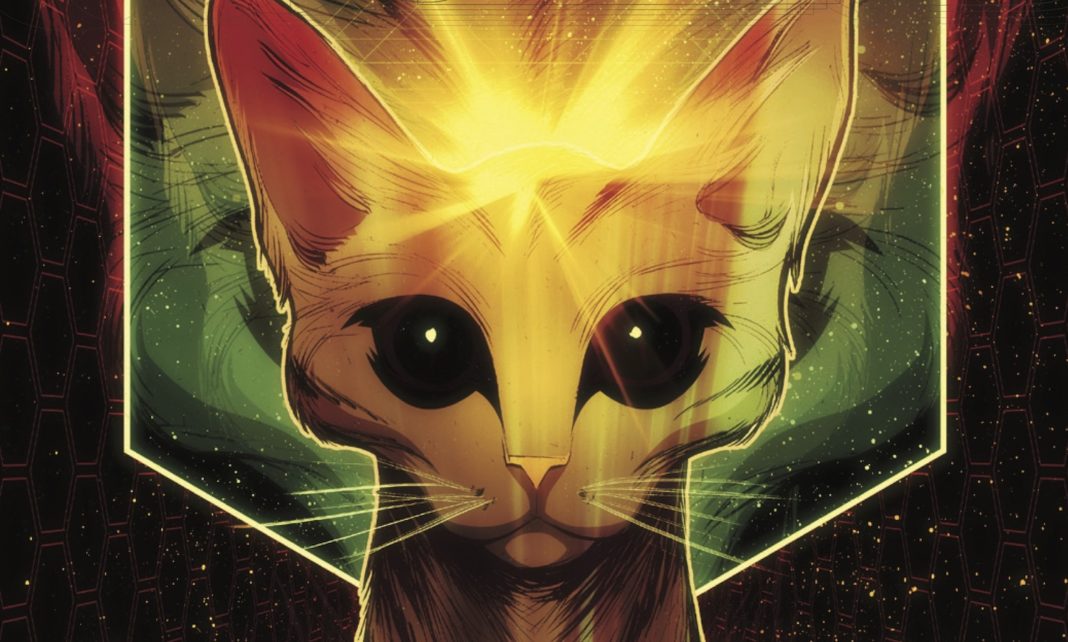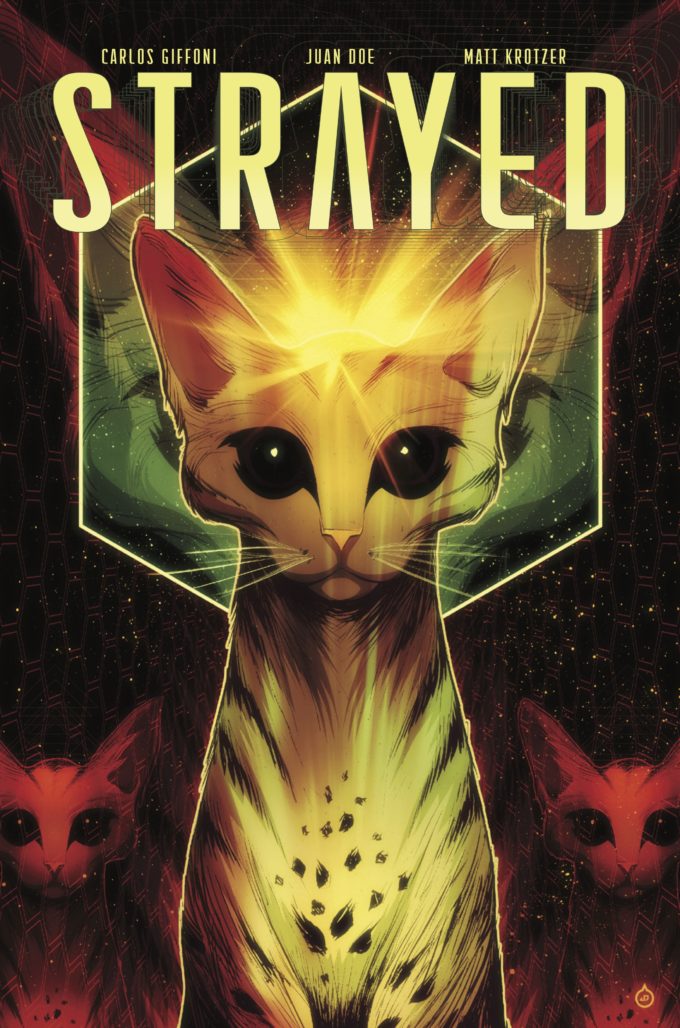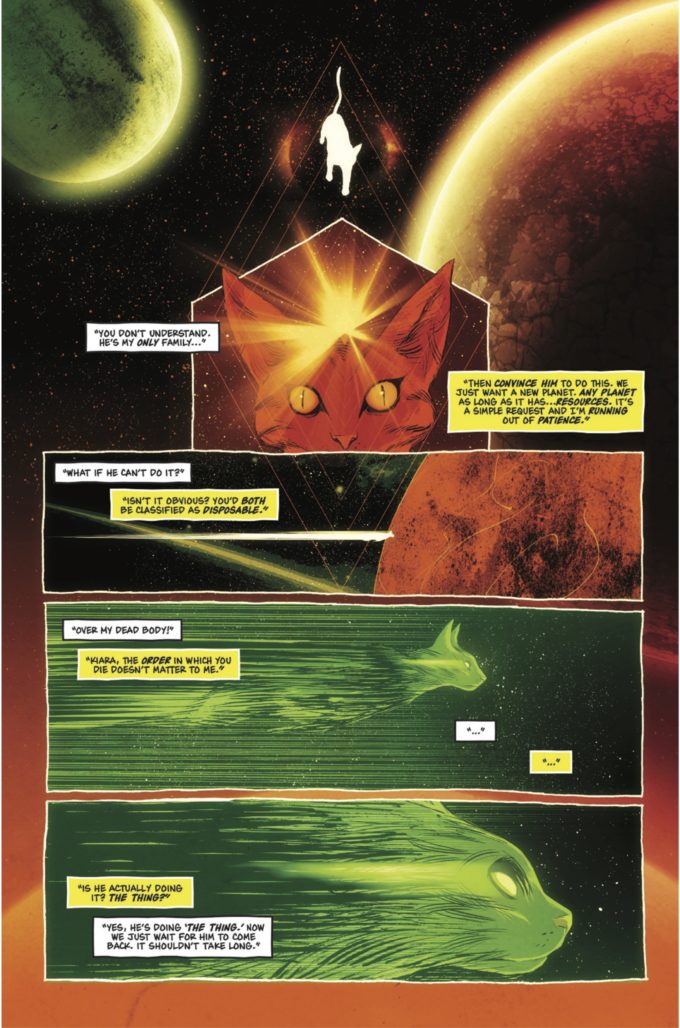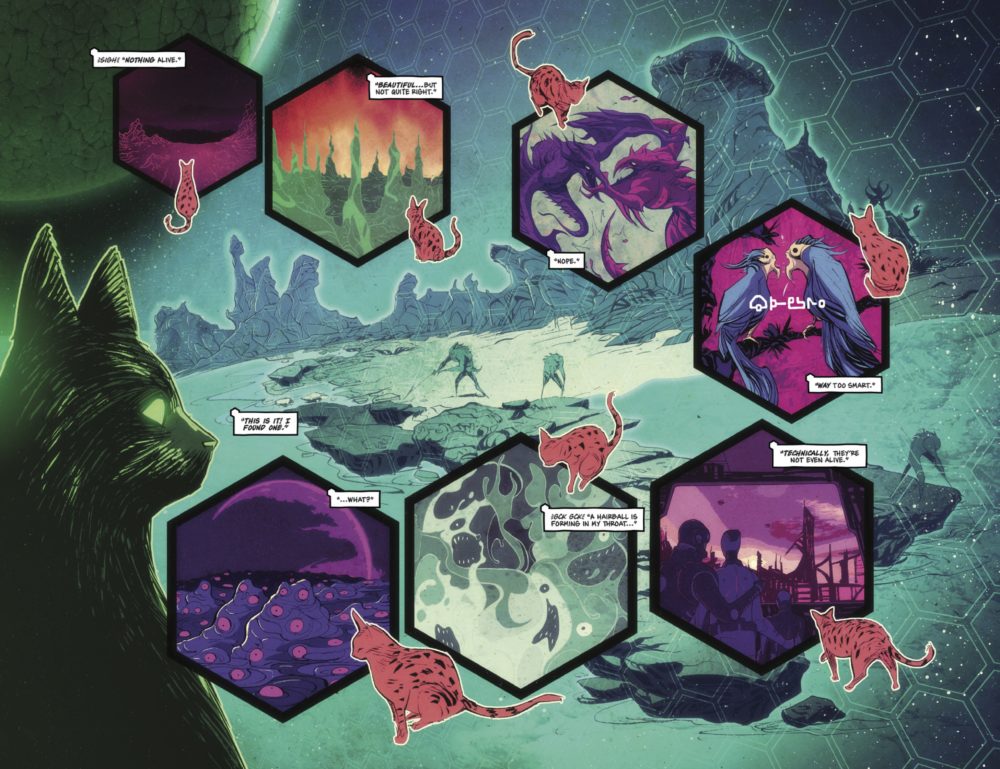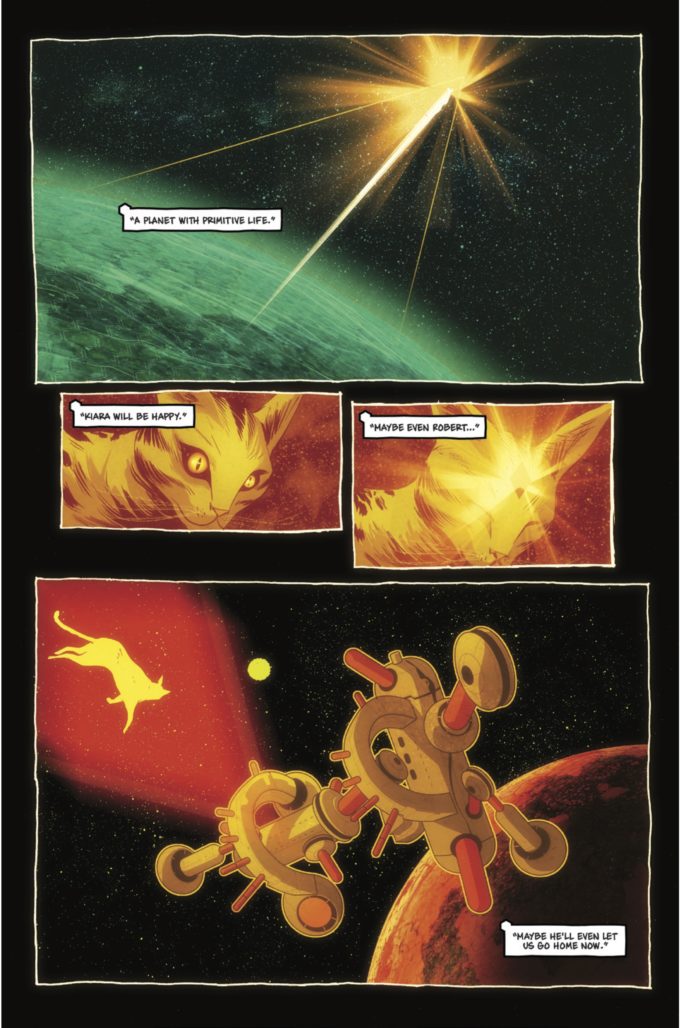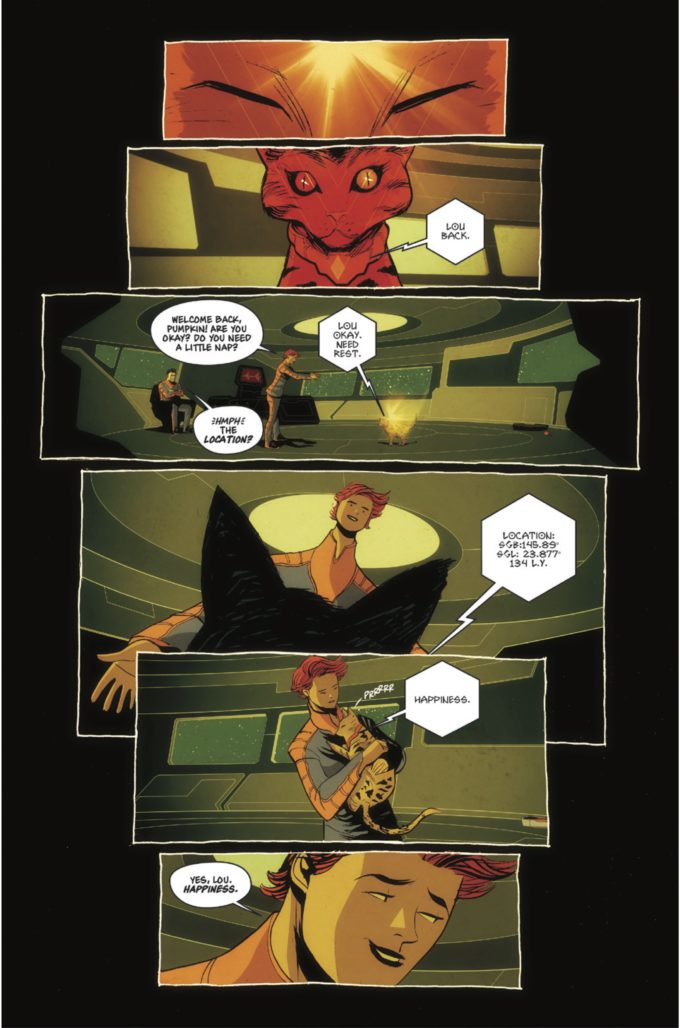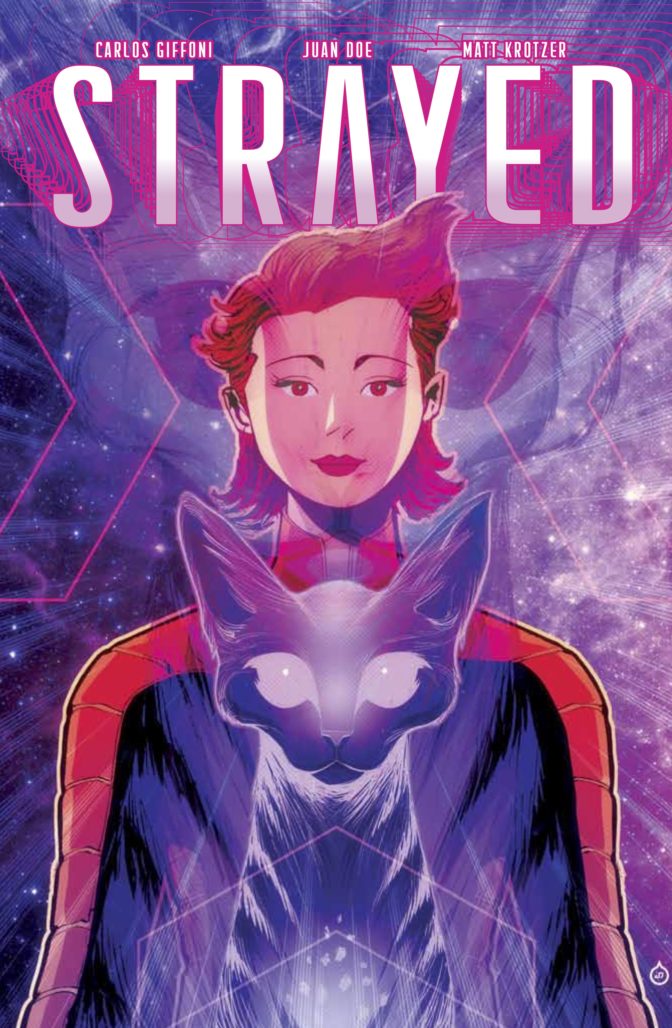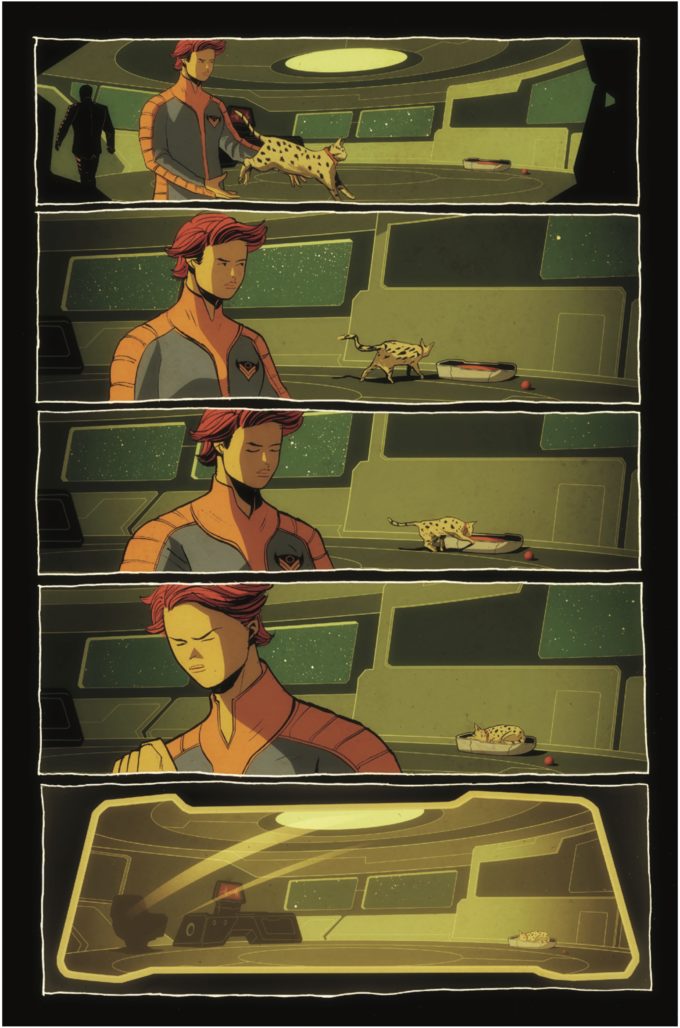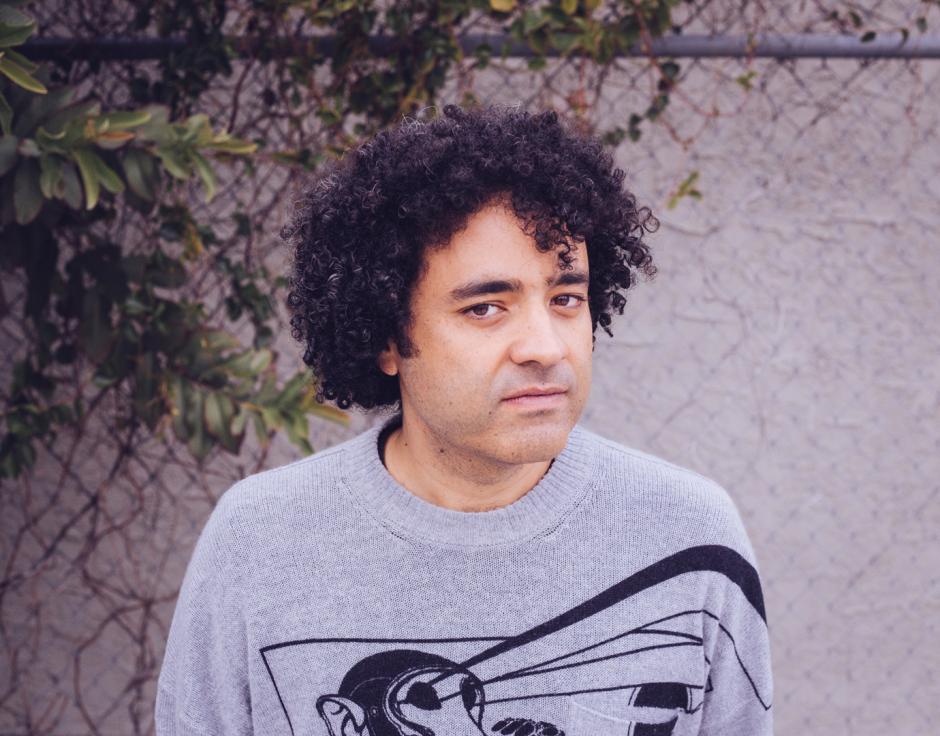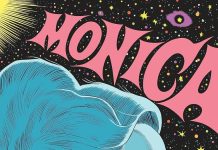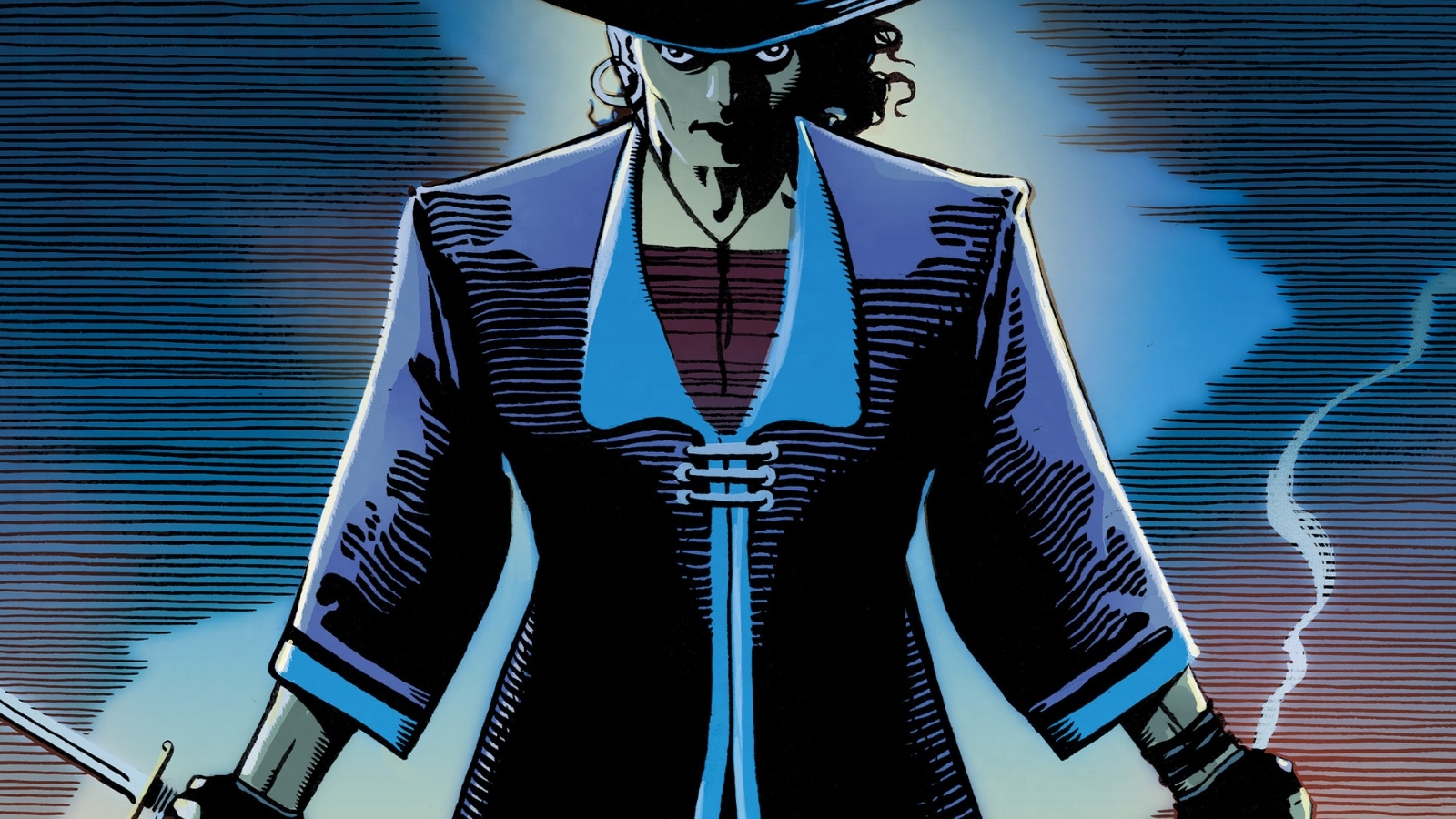I met Carlos by happenstance at NYCC, looking for his very talented collaborator Juan Doe. He introduced me to the comic he made with Doe, Strayed, currently being published by Dark Horse Comics. I’m really happy for our random meeting because I quickly took to his series, its grandiose ideas, and the very human concepts it explores. I really enjoyed interviewing him about the making of Strayed and pitching something very outside the traditional framework of comic book stories.
Strayed is a series that’s difficult to sum up in a sentence or two. Did that make it challenging to pitch?
I have been pitching Strayed for almost two years now– to editors, comic creators, the team on the book, publishers, marketing teams, press, people at cons. So it gets easier. I think the trick with pitching is to know the audience you are pitching to and modifying your pitch accordingly. Of course, there is a version of pitching Strayed that takes 20 minutes to do, but I believe that type of long pitch is only useful in writing. In my experience, a pitch for a story should take you two sentences or 30 seconds max.
So here are the short and long versions of the Strayed pitch at the moment, I am improvising these two as I write this email, not copying from any documents:
Short: An Astral traveling cat will have to save the galaxy.
Long: An astral traveling cat and his genius owner, who creates a device that translates the cat’s brainwaves into speech, are being used by the military to scout for new planets with life and colonize them. Eventually, they’ll find out what the military is up to and will have to figure out a way to defeat their captors, no matter the cost.
I think those do a pretty good job given their lengths. The trick with refining a pitch is doing it in person as much as you can, so you can see when people’s eyes light up, or when you lose them, then you can edit your pitch accordingly.
A lot of media, especially in film and TV, is expected to boil down to a short logline. Do you prefer to write stories unconstrained by those expectations?
I like my stories to be pretty wild but still be cohesive. That doesn’t mean they can’t have a short logline; I believe those two things are independent of each other. I think, as a writer, I should be able to condense my story to a few sentences no matter how complex it is. It’s part of the job. Creating a logline helps me narrow down what the core elements of the story are that must fit in that compact structure, but it does not dictate what I do in said story. The logline and the actual story serve different purposes.
How did Strayed find its way to Dark Horse?
Dark magic!
I spent over eight months pitching it to anyone in the comics industry that would listen, at cons, online, in social media private messages. The pitch always came with art samples, comic books are a visual medium, so the art has to match the concept, and having Juan Doe in the team as the artist made life much easier.
There was interest from other publishers, but they weren’t the right fit. I was able to connect briefly with Spencer Cushing, our editor at DH, after a panel during San Diego Comic-Con last year and sent him a PDF of issue one after the show. He loved it and got it approved shortly after.
So the dark magic here is just working hard, being kind to people, making personal connections when possible, and also be patient and empathetic with everyone involved on the publisher side. Publishers are trying to do their best job and to put the best books out there, but it is a business and it is governed by business priorities, so you want to come across as someone that is easy to work with, and that will be an ally in helping them fulfill their goals. Which of course, you should be, since they are the ones that will get your book out there to the world.
And that is how that dark, dark spell works.
Strayed is less about any one plot point than the idea of connection itself. What made you want to explore that theme?
I am very interested in how people connect and how they connect to the world, and particularly in Strayed their pets, of course. Every interaction directly or indirectly connects us with someone or something else, and afterward, we are usually changed in some way, even if it’s slightly. Interaction is at the core of all life. Our actions forming a distinct shape that defines who we are.
And that sounds fancy, but the reality is also that initially I just wanted to write a cool Sci-Fi story about an astral traveling cat, but like art tends to do for me, it became quite serious and personal.
What appeals to you about the dynamic between a pet and its owner?
There have been many difficult days in my life when having one of my pets with me just helped me get through rough things.
Pets often display unconditional love and affection, each has a distinct personality, and their behavior is often driven by natural instinct instead of intellect. Pets, and particularly the best pets–cats, can create a strong bond of friendship with us that can be stronger than our connections with a lot of humans.
So I mean, that is all exciting stuff to explore for me, and then having two cats at home just made it much easier to write those scenes between Lou and Kiara.
How is the connection between an owner and a pet different than other relationships?
Less drama, more cuddles, more loyalty.
At what point in the process did Juan Doe join the project?
Juan came in during January of 2018. I had been working on the pitch pages with another artist for a few months, and it just wasn’t working out. After they were off the project, I was frustrated about all the time and effort that now looked wasted. Then I contacted Juan since his art was part of the visual references I had for Strayed, expecting never to hear from him since, at that point, I had nothing published. A few days later, after some back and forth and a two-hour call, he was the artist for Strayed. I am very thankful for him taking a chance on a new comics writer with a wild concept, we have become excellent friends since then.
His artwork is very expressive, from the linework all the way down to his colors. What effect did his unique style have on the tone of the comic?
I wrote more scenes with Lou flying through space in astral form after I saw what Juan did with the first few pages. The tone was there already when he started, but his art gave it a life that made it more unique.
Having Juan simplified the process of making this book because he is a pro, but also his style is perfect for Strayed. I felt that I could go as wild as needed and he would make it work, it’s been great.
The words and art feel very intertwined. How collaborative was your partnership with Juan?
We talked on the phone to go over things before every issue, and also were always in communication through text messages and emails.
We both have talked before about how this book felt like an improv group extremely locked in, where each note works with the other ones to create something fantastic, but that has very few standard constraints.
We also met in person after issue one was completed at Heroes-Con last year, and realized we both see the world in many similar ways.
And the secret weapon is letterer Matt Krotzer, he did a lot of great work making sure the letters fit the mood of the story.
The last issue is an incredible wrap-up to the story and its themes. When did you figure out how to end the series?
Thank you, I am glad it worked for you.
I knew what the last page would be pretty much before I started writing the first issue. I think that was key to making it all work because then every step, every panel, every page, and every issue, become a build-up to that last image. The unique structure of the issue itself, I don’t want to spoil it, but it is unlike the rest of the series, came just before it was time to write it. I was very inspired by Juan’s art in the previous issue and wanted to see how far he could go with the concept. I knew at that point that he could execute on the vision, and gave him minimal restrictions on the script other than a base idea of what each page was going to be and the critical elements to highlight. I honestly think it is his best work so far out there.
And all I can say about my writing on that last issue is that I was in tears most of the time I wrote it. But were those tears of joy, sadness, or both? Read the issue and find out!
How does the process of making comics compare to video game production?
Besides production, I also have done a lot of creative work in games. The need to come up with core ideas that then are explored by a different team or artist is something that I am used to doing.
The main difference for me is that all the video game work I have done has been work for hire and for a corporation, and the comics stuff I have been working on has been all creator-owned. So the amount of freedom that I have in comics is significantly more liberating. Games have a larger audience, and particularly in the game I work on right now, there are about 100 million players that experience the work I do with my team. That is just in a different galaxy compared to the reach of comics at the moment, and that can be exciting, but the heart is where the heart is.
Do you plan on making more comics going forward?
I have a couple of unannounced books coming next year already greenlit by publishers that I can’t talk about yet. And my four-issue mini-series Space Riders: Vortex of Darkness with Alexis Ziritt just started releasing this past month. That is a story in a world that Alexis created, and that already has two volumes out there. It’s wild because it is one of my favorite comic series and now I get to create my own story within it.
I’ve enjoyed working on this medium, and want to continue creating within it for as long as my brain keeps giving me ideas in need of visual resolution. I love it.
Follow Carlos through his website and on Twitter @carlosiffoni. Buy Strayed wherever great comics are sold.
Matt Chats is an interview series featuring discussions with a creator or player in comics, diving deep into industry, process, and creative topics. Find its author, Matt O’Keefe, on Twitter and Tumblr. Email him with questions, comments, complaints, or whatever else is on your mind at [email protected].


